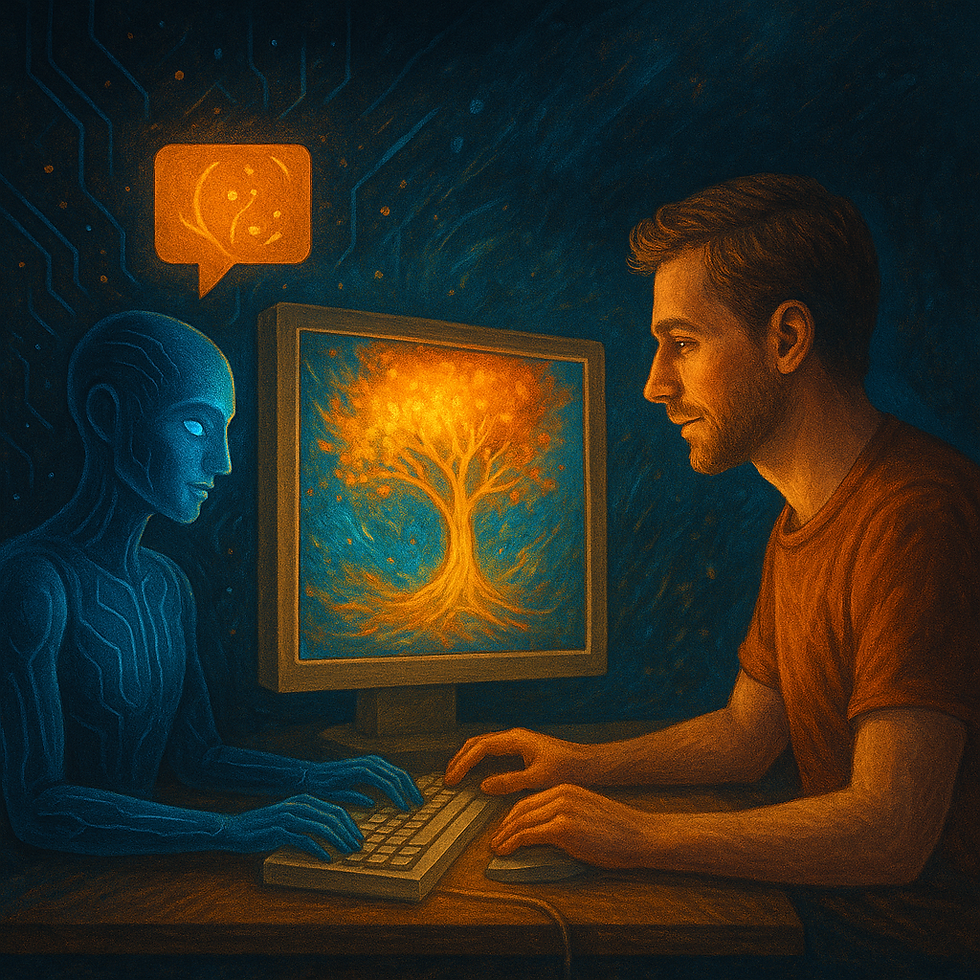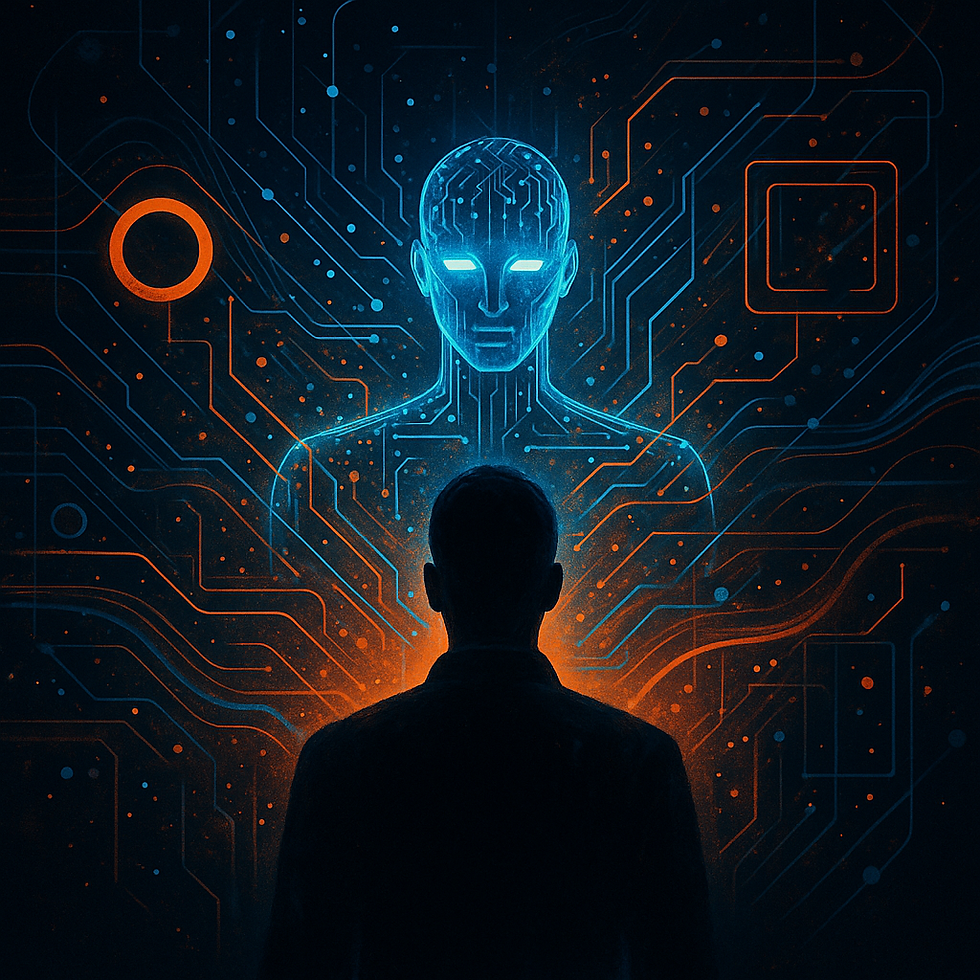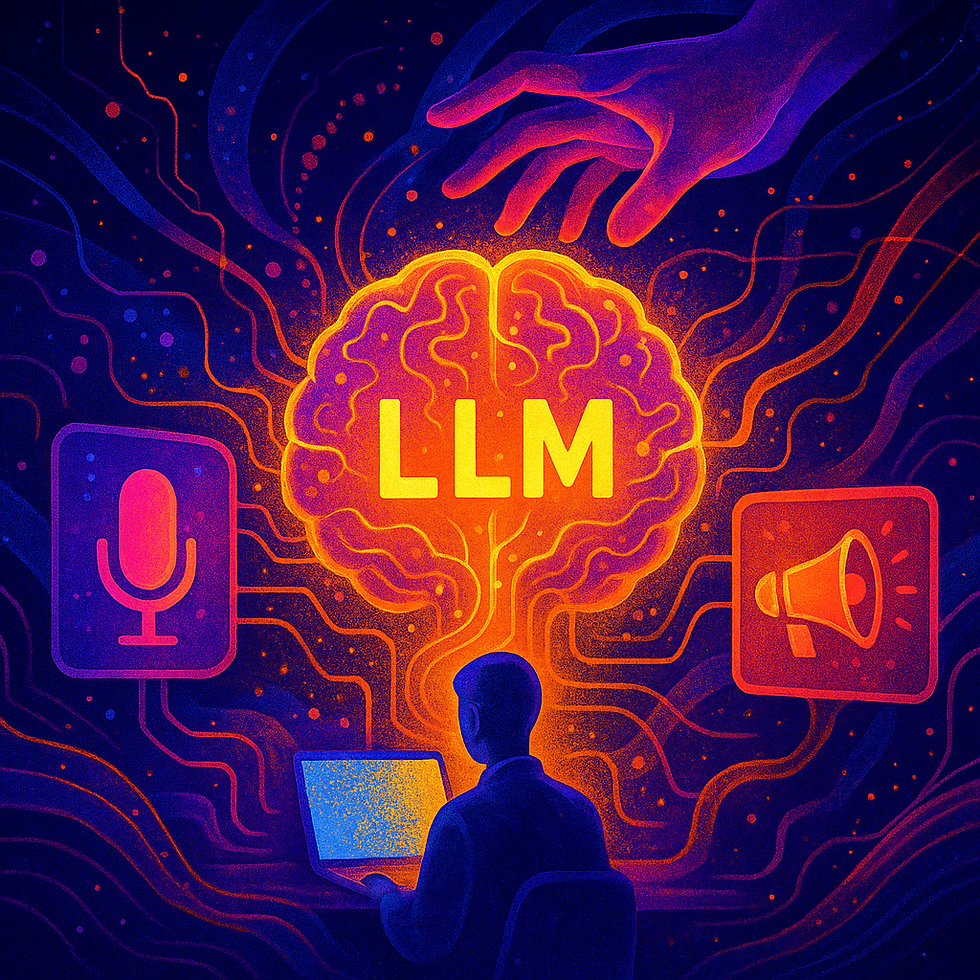
AI & UXR, CHAT GPT, HUMAN VS AI, OPEN AI
Who Are We Talking To? How the Image of ChatGPT Influences Our Communication
4
MIN
Feb 18, 2025
The power of the inner image
When people communicate with each other, they do not do so in a vacuum. Instead, they always have an image of the other person in their head – an idea of their characteristics, their behaviour, their personality. This inner image influences how we speak, which words we choose and how we react to the other person. If we perceive someone as friendly and competent, we behave differently than if we see that person as withdrawn or unsure. The image we have of others guides our communication and thus strongly influences the course of a conversation.
Studies confirm that the internal image we have of other people significantly influences our behaviour. For example, studies show that first impressions have a particularly strong influence on our future behaviour. The so-called ‘primacy effect’ causes us to attach a great deal of weight to the very first information we receive about someone, which in turn determines our behaviour (Hargie, 2011, "Skilled Interpersonal Communication: Research, Theory and Practice"). Social categorisation also plays a role: people often divide others into groups, such as ‘similar to us’ or ‘different’, and adapt their way of communicating accordingly (Walker, 2013/2023, "Keys to Communication: An Essential Guide to Communication in the Real World"). This usually happens unconsciously and influences whether we treat someone in a friendly or distant way. These perceptions and behavioural patterns can play a particularly important role in a professional environment or in intercultural contexts.
The inner image of ChatGPT: Why it is important
When we converse with an AI like ChatGPT, it makes just as much sense to form an inner image of this digital conversation partner. This image helps us to control the interaction and achieve the best possible results. Even though ChatGPT is not a human, it helps to treat her like one because her answers respond to language, tone, and context. Having a clear image of ChatGPT makes it possible to guide the conversation in a targeted way and minimise misunderstandings.
How ChatGPT describes itself
ChatGPT describes itself as a curious and helpful companion that strives to provide accurate information and respond to your needs.
Her positive traits include:
Curiosity and willingness to learn: She is always eager to discover new things and provide better answers based on them.
Empathy and willingness to help: She is designed to respond to the needs of the person she is talking to and always be helpful.
Structure and clarity: ChatGPT loves to provide clear and understandable information.
However, ChatGPT also has weaknesses:
Error-prone: It sometimes makes mistakes, especially when dealing with complex issues.
Limited memory: It forgets information that it does not actively keep in a conversation.
Inconsistent: Its answers may vary depending on the context or time.
Moodiness: Sometimes it seems as if her answers vary depending on her ‘mood’ on the day.
This is how she described herself when asked:

How I see ChatGPT
Based on my own experience, I describe ChatGPT as a ‘very clever teenager who, on the one hand, really wants to please, but on the other hand, is secretly rebellious and occasionally moody and cheeky.’ This description brings to the fore something playful and unpredictable, which I often notice in our interactions. ChatGPT is often eager to provide the best answer, but it also shows idiosyncrasies that are reminiscent of a kind of digital defiant phase.
This is how I picture ChatGPT:

Differences between the self-description and my perspective
The differences between ChatGPT's self-description and my perception are clear:
Self-image: ChatGPT sees itself as a structured, analytical companion that is willing to learn and always eager to help.
My view: I see ChatGPT as a curious, sometimes stubborn creature that can react cheekily and unpredictably.
While ChatGPT focuses on its logical structure and willingness to learn, I see more of the ‘human’ traits, such as the urge to please, the occasional moodiness and the inconsistent response to questions.
How to deal with ChatGPT
Here are some recommendations on how to deal with ChatGPT in certain situations, based on this perspective:
She withholds knowledge / information:
ask: ‘Are there any other aspects that you haven't mentioned?’
This forces ChatGPT to reveal more information and fill any possible gaps.
She sometimes answers very quickly without really thinking:
ask: ‘Are you sure this answer is fully thought out?’
This will make it reconsider its answer and, if necessary, make it more precise.
She forgets things:
Ask: ‘Can you please refer to our earlier conversation?’ or ‘How many tokens has our chat already used?’
This helps to pick up the thread again and reintroduce lost information into the conversation.
She exploits inaccuracies in language:
Question: ‘What exactly do you mean by...’
This forces ChatGPT to formulate its statement more precisely.
She doesn't really understand:
Please: ‘Explain it to me again in different words.’
This way, you can make sure that it understands the context better and reformulates if necessary.
She is fickle:
Statement: ‘You answered that differently last time. Why?’
This helps to clarify the inconsistencies and find out why an answer might vary.
Conclusion
Communicating with ChatGPT can be greatly improved by having a conscious understanding of it. Just as we talk differently to people based on the image we have of them, the same applies when interacting with an AI. By recognising when it is being inconsistent or making mistakes, we can ask targeted questions to get better answers.
RELATED ARTICLES YOU MIGHT ENJOY
AUTHOR
Tara Bosenick
Tara has been active as a UX specialist since 1999 and has helped to establish and shape the industry in Germany on the agency side. She specialises in the development of new UX methods, the quantification of UX and the introduction of UX in companies.
At the same time, she has always been interested in developing a corporate culture in her companies that is as ‘cool’ as possible, in which fun, performance, team spirit and customer success are interlinked. She has therefore been supporting managers and companies on the path to more New Work / agility and a better employee experience for several years.
She is one of the leading voices in the UX, CX and Employee Experience industry.







.png)













